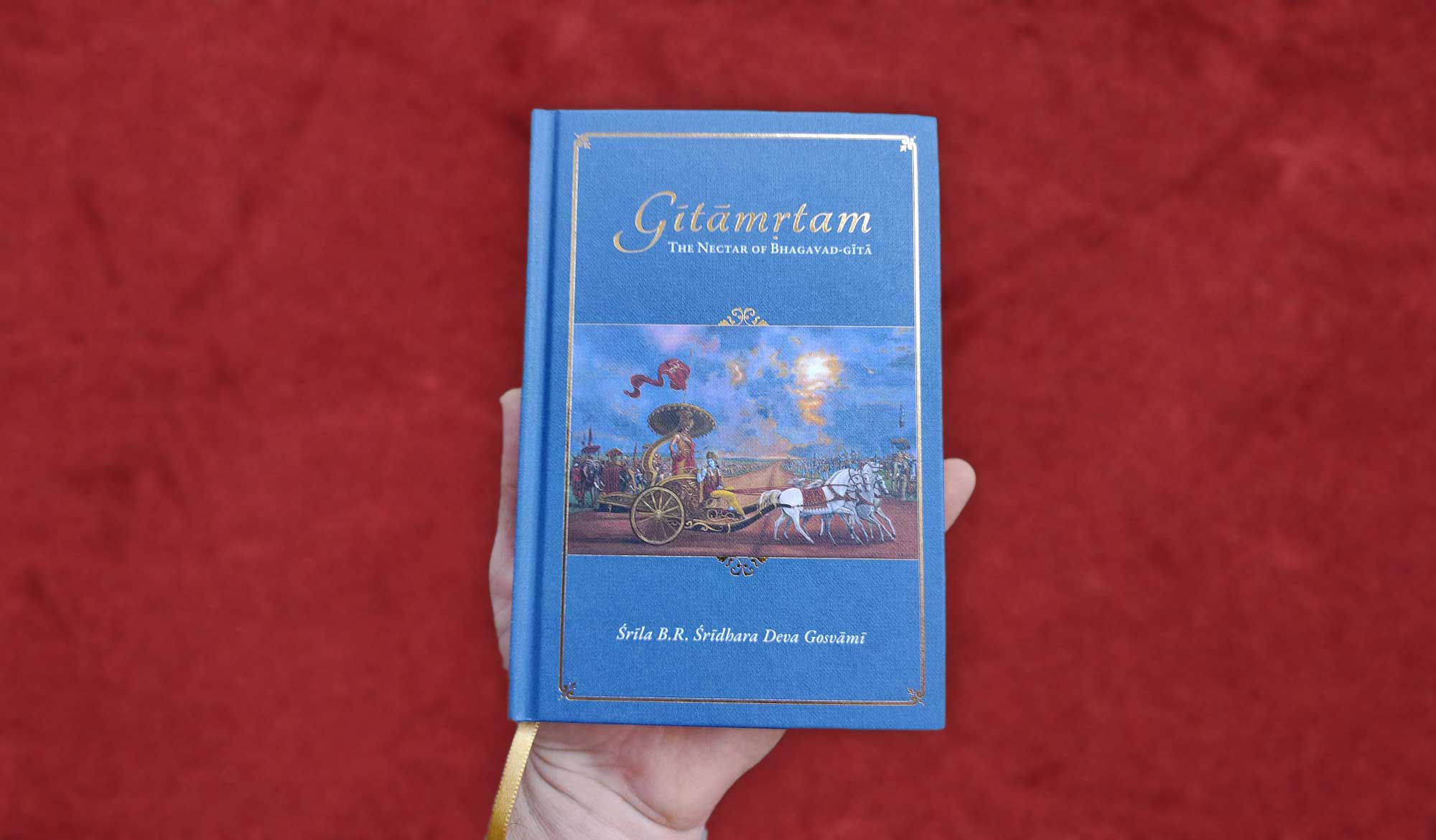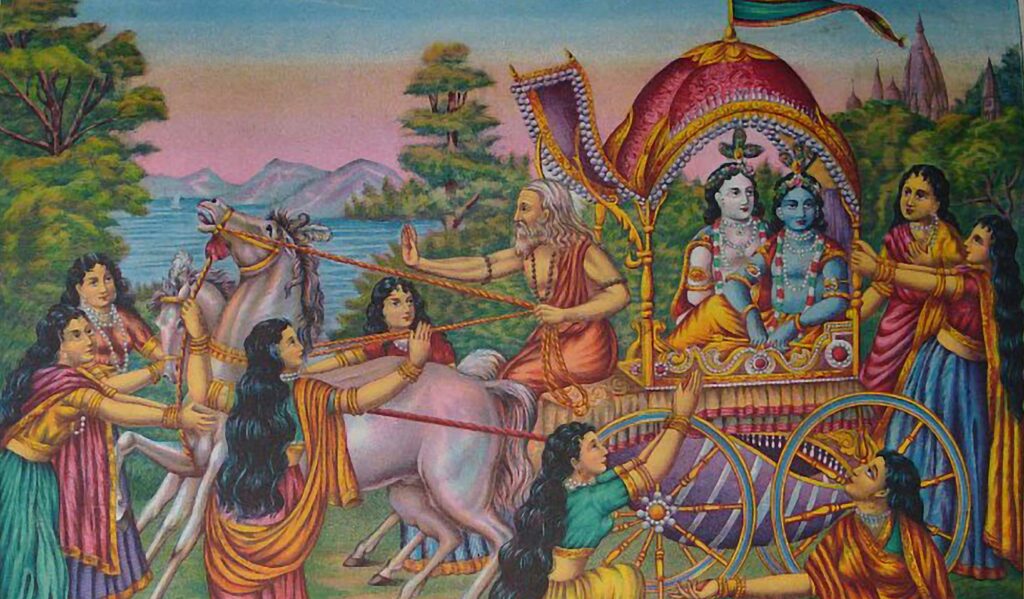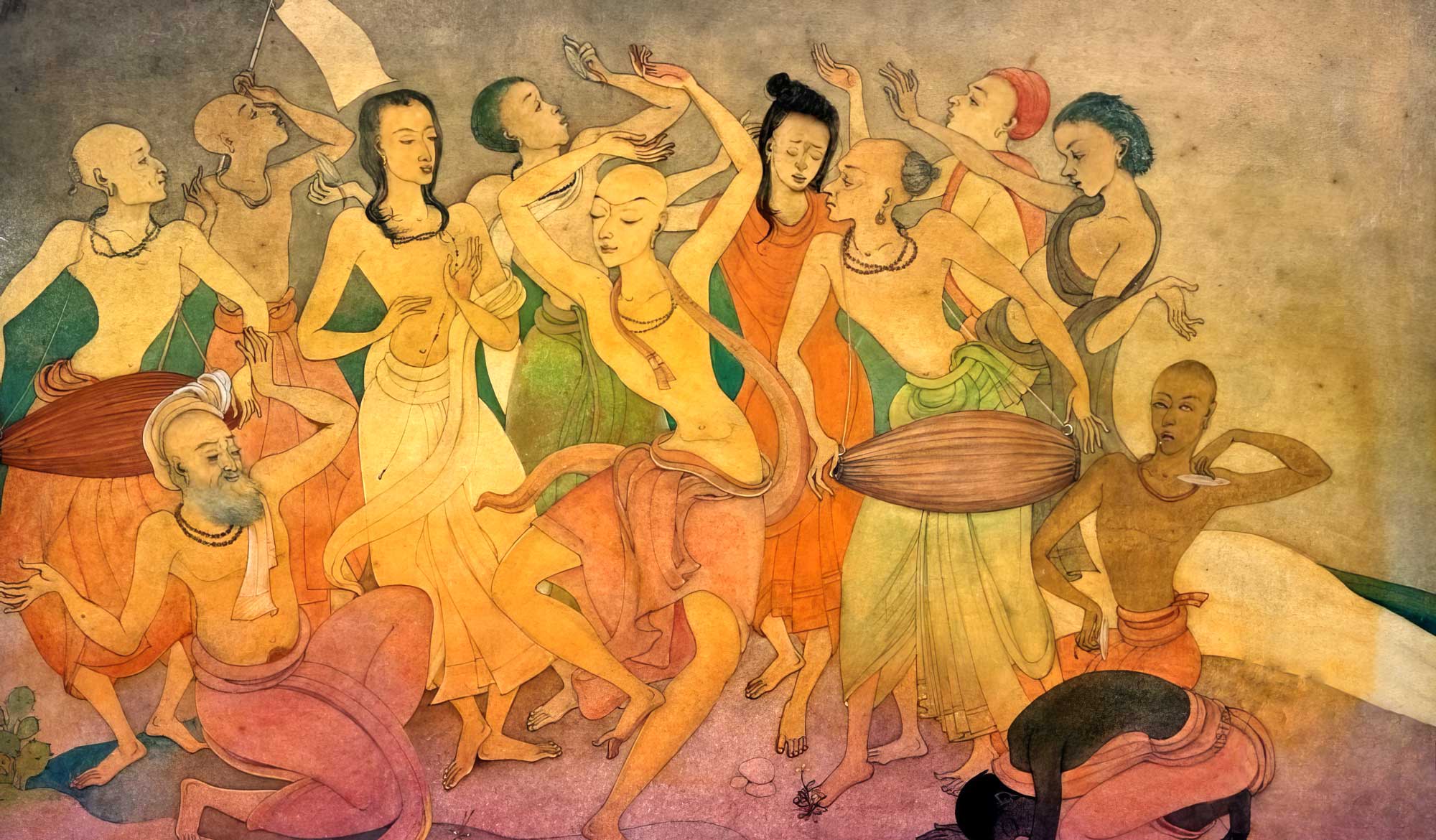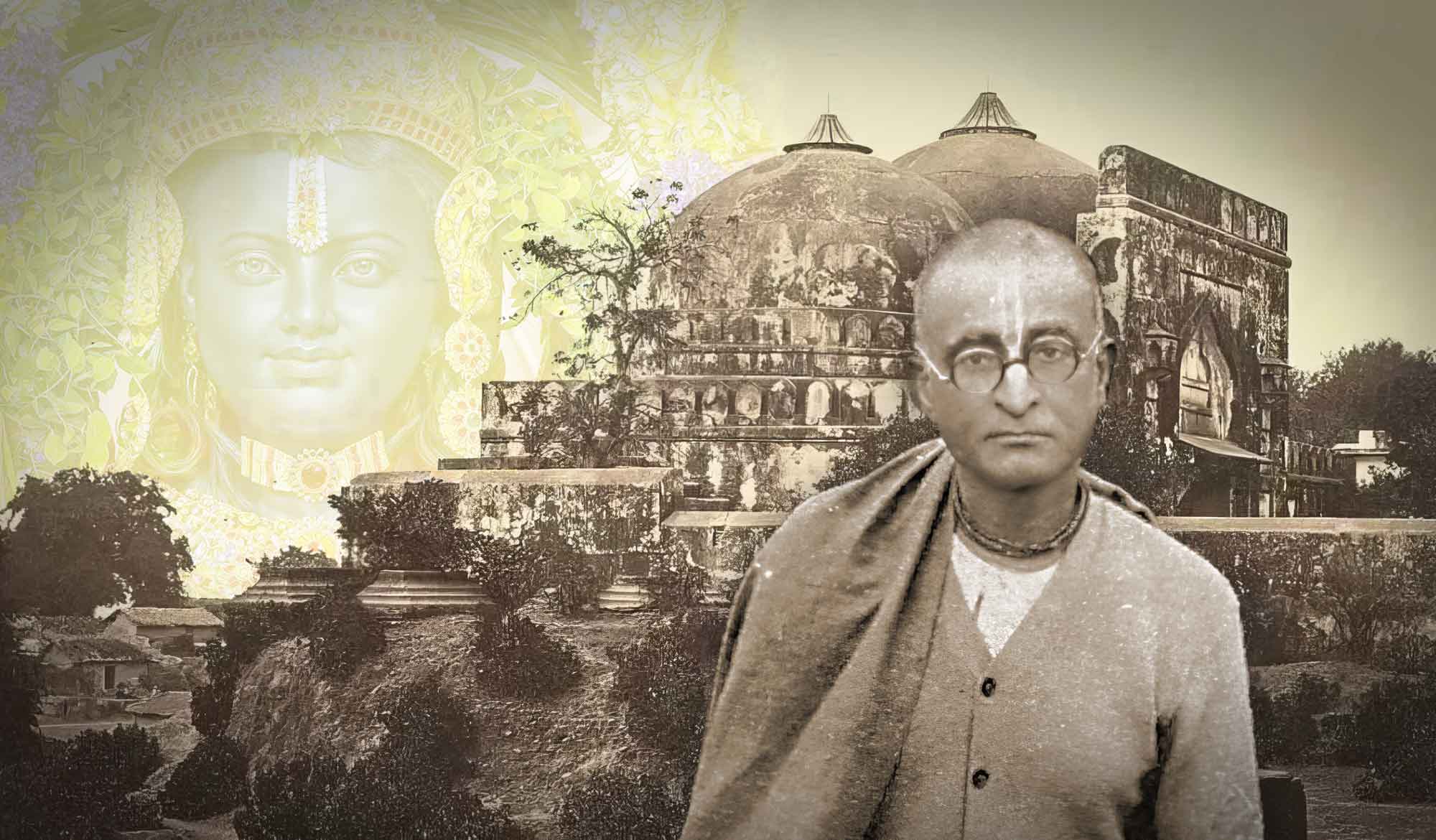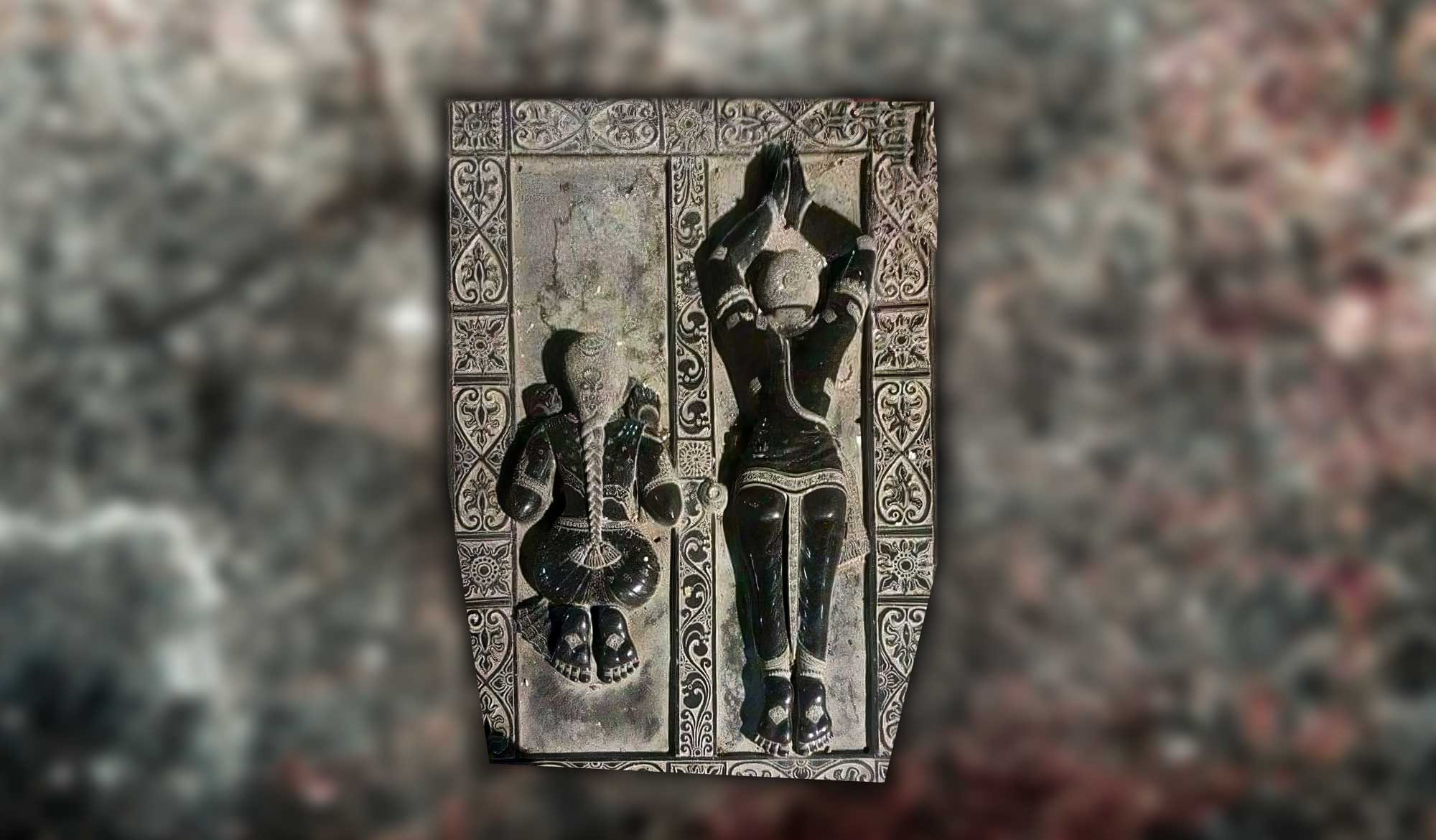Overview
The following is the preface written by Śrīpāda Araṇya Mahārāja to Gauranga Vani Publishers new book, 'Gītāmṛtam - The Nectar of Bhagavad-gītā' with illuminations by Śrīla Śrīdhara Deva Gosvāmī Mahārāja.
Let me offer my respectful obeisances unto my initiating spiritual master, Śrīla A.C. Bhaktivedānta Swami Prabhupāda who, out of his causeless mercy, dragged me out of this material world and showed me the authorised path to attain the highest goal of life, kṛṣṇa-prema. Let me also offer my respectful obeisances unto his dearmost friend and śikṣā-guru, Śrīla Bhakti Rakṣaka Śrīdhara Deva Gosvāmī Mahārāja who, by his association, inspired Śrīla Prabhupāda Swami Mahārāja to present the great treatise Bhagavad-gītā As It Is, for the benefit of the entire human race.
The whole of the Mahābhārata culminates in the Battle of Kurukṣetra and the conversation between the Supreme Lord Bhagavān Śrī Kṛṣṇa and His dearmost friend and devotee Arjuna. It was Śrīla Śrīdhara Mahārāja who presented Bhagavad-gītā in such a way as to give a deeper peep into that conversation, knowing that Kṛṣṇa’s topmost servitor and intimate counterpart Śrīmatī Rādhārāṇī, was waiting after many years of anticipation and intense separation from Her beloved, only to be denied the opportunity of union due to external circumstances.
From his inner inspiration which was revealed by the Lord, Śrīla Śrīdhara Mahārāja explained the deep significance of the catur-ślokī (Chapter 10, Verses 8-11) that the Supreme Lord enunciated to Arjuna at a most intense time. Thus, through these verses, Śrīla Śrīdhara Mahārāja has presented to the Vaiṣṇava community and theistic-minded persons the highest pinnacle of Gauḍīya Vaiṣṇava siddhānta, namely union in separation. In Kali-yuga Śrī Caitanya Mahāprabhu came to deliver that highest sentiment through His practical demonstration of nāma-saṅkīrtana and His discussions on rasa-tattva with Śrī Rāya Rāmānanda.
Just as Śrīla Śrīdhara Mahārāja extracted all of these deep sentiments from the Gītā and presented them in His own treatise, The Hidden Treasure of the Sweet Absolute, similarly, we have extracted his nectarean teachings from the extensive treasure trove of his lectures on select verses of the Gītā and are presenting them in this book, Gītāmṛtam.
Tridaṇḍi-bhikṣu
Swami Bhakti Kiśora Araṇya
How to get a copy of this book
Anyone looking to purchase a copy of this new publication “Gītāmrtam – The Nectar of Bhagavad-gītā” can also contact Gaura Gopāla Dāsa: [email protected]
Read Articles and Books related to Bhagavad-gītā
- 📖 Bhagavad Gita – Swami B.G. Narasiṅgha Mahārāja’s Commentary (Book)
- 🎧 Bhagavad Gita Audiobook (Swami B.G. Narasingha Maharaja)
- ❔Bhagavad-gītā FAQs
- 📖 Bhagavad Gita As It Is – Original 1972 Macmillan Edition (Book)
- The Secret of the Lord’s Appearance According to the Gītā by Śrīla Bhaktivinoda Ṭhākura
- Introduction to the Bhagavad-gītā by Śrīla Śrīdhara Mahārāja
- The History of the Bhagavad-gītā by Swami B.V. Giri
Further Reading
Pilgrimage with Swami Narasiṅgha – Part 7: Keśī Ghāṭa
Continuing with our pilgrimage series, this week Śrīla Narasiṅgha Mahārāja takes us to Keśī Ghāṭā where he tells us about Madhumaṅgala’s meeting with the Keśī demon, what Keśī represents, and how Śrīla Prabhupāda almost acquired Keśī Ghāṭa. Mahārāja also narrates his own experience. This article has been adapted from a number of talks and articles by Narasiṅgha Mahārāja.
Prema Dhāma Deva Stotram with the Narasiṅgha Sevaka Commentary – Verses 61-65
In verses 61 to 65 of 'Prema Dhāma Deva Stotram', Śrīla Śrīdhara Mahārāja narrates the pastime of Śrī Caitanya at Caṭaka Parvata In Purī and explains how the scriptures produced by Brahmā and Śiva are ultimately searching for the personality of Mahāprabhu who is merciful too all jīvas, no matter what their social position.
Prabhupāda Śrīla Sarasvatī Ṭhākura’s Visit to Ayodhyā
With the forthcoming observance of Śrī Rāma Navamī, we present 'Prabhupāda Śrīla Sarasvatī Ṭhākura’s Visit to Ayodhyā' written by Śrīla Bhaktisiddhānta Sarasvatī Ṭhākura Prabhupāda from The Gaudīyā magazine, Vol 3. Issue 21/ In December 1924, after visiting Benares and Prāyāga, Sarasvatī Ṭhākura visited the birth-site of Śrī Rāmācandra in Ayodhyā.
Śaraṇāgati – The Only Path to Auspiciousness
In this article, 'Śaraṇāgati - The Only Path to Auspiciousness', Dhīra Lalitā Dāsī analyses the process of śaraṇāgati (surrender) beginning with śraddhā (faith). She also discusses the role of śāstra and the Vaiṣṇava in connection with surrender.
Pilgrimage with Swami Narasiṅgha – Part 7: Keśī Ghāṭa
Continuing with our pilgrimage series, this week Śrīla Narasiṅgha Mahārāja takes us to Keśī Ghāṭā where he tells us about Madhumaṅgala’s meeting with the Keśī demon, what Keśī represents, and how Śrīla Prabhupāda almost acquired Keśī Ghāṭa. Mahārāja also narrates his own experience. This article has been adapted from a number of talks and articles by Narasiṅgha Mahārāja.
Prema Dhāma Deva Stotram with the Narasiṅgha Sevaka Commentary – Verses 61-65
In verses 61 to 65 of 'Prema Dhāma Deva Stotram', Śrīla Śrīdhara Mahārāja narrates the pastime of Śrī Caitanya at Caṭaka Parvata In Purī and explains how the scriptures produced by Brahmā and Śiva are ultimately searching for the personality of Mahāprabhu who is merciful too all jīvas, no matter what their social position.
Prabhupāda Śrīla Sarasvatī Ṭhākura’s Visit to Ayodhyā
With the forthcoming observance of Śrī Rāma Navamī, we present 'Prabhupāda Śrīla Sarasvatī Ṭhākura’s Visit to Ayodhyā' written by Śrīla Bhaktisiddhānta Sarasvatī Ṭhākura Prabhupāda from The Gaudīyā magazine, Vol 3. Issue 21/ In December 1924, after visiting Benares and Prāyāga, Sarasvatī Ṭhākura visited the birth-site of Śrī Rāmācandra in Ayodhyā.
Śaraṇāgati – The Only Path to Auspiciousness
In this article, 'Śaraṇāgati - The Only Path to Auspiciousness', Dhīra Lalitā Dāsī analyses the process of śaraṇāgati (surrender) beginning with śraddhā (faith). She also discusses the role of śāstra and the Vaiṣṇava in connection with surrender.


